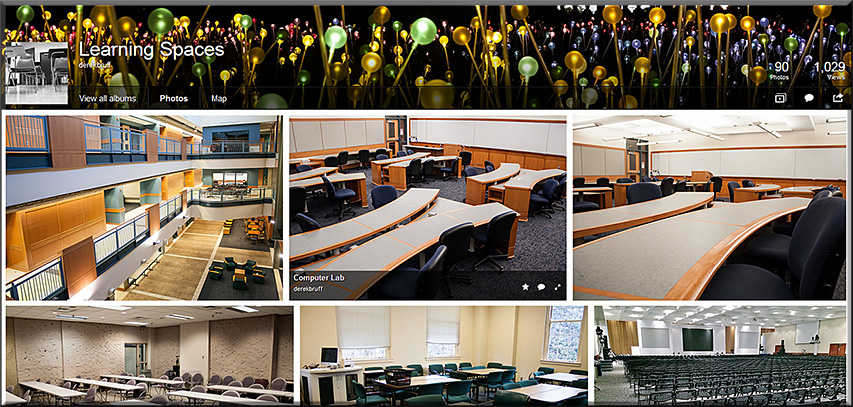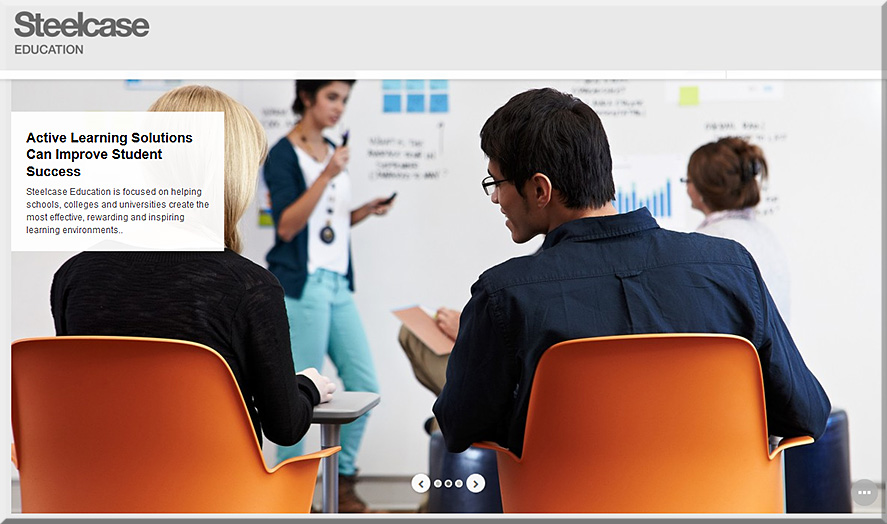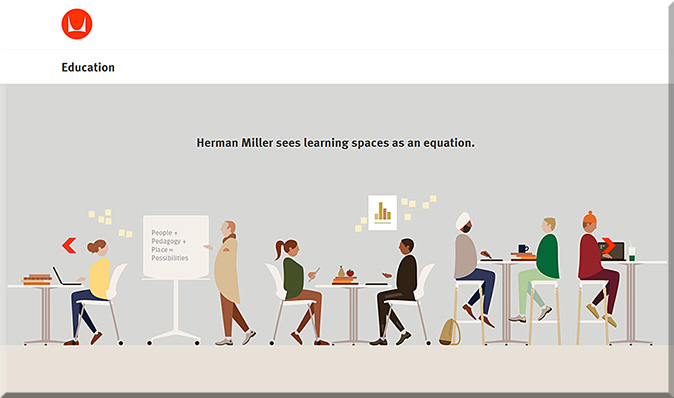Below are some resources, ideas, questions, and more regarding the topic of learning spaces:
Per Jeanne Narum (Principal, Learning Spaces Collaboratory and Founding Director, Project Kaleidoscope), we’ve been asking the following key questions for several years now:
- What do we want our learners to become?
- What experiences make that becoming happen?
- What spaces enable those experiences?
- How do we know?
The Learning Spaces Collaboratory
NOTE:
Be sure to see The LSC Guide: Planning for Assessing 21st Century Spaces for 21st Century Learners
Derek Bruff’s Learning Spaces gallery
Active learning increases student performance in science, engineering, and mathematics – a meta-analysis of 225 studies
Abstract
To test the hypothesis that lecturing maximizes learning and course performance, we metaanalyzed 225 studies that reported data on examination scores or failure rates when comparing student performance in undergraduate science, technology, engineering, and mathematics (STEM) courses under traditional lecturing versus active learning. The effect sizes indicate that on average, student performance on examinations and concept inventories increased by 0.47 SDs under active learning (n = 158 studies), and that the odds ratio for failing was 1.95 under traditional lecturing (n = 67 studies). These results indicate that average examination scores improved by about 6% in active learning sections, and that students in classes with traditional lecturing were 1.5 times more likely to fail than were students in classes with active learning. Heterogeneity analyses indicated that both results hold across the STEM disciplines, that active learning increases scores on concept inventories more than on course examinations, and that active learning appears effective across all class sizes—although the greatest effects are in small (n ? 50) classes. Trim and fill analyses and fail-safe n calculations suggest that the results are not due to publication bias. The results also appear robust to variation in the methodological rigor of the included studies, based on the quality of controls over student quality and instructor identity. This is the largest and most comprehensive metaanalysis of undergraduate STEM education published to date. The results raise questions about the continued use of traditional lecturing as a control in research studies, and support active learning as the preferred, empirically validated teaching practice in regular classrooms.
Building Community with FLEXspace: The Flexible Learning Environments eXchange — from educause.com by Lisa Stephens
Key Takeaways
- FLEXspace is a large-scale community solution to capture detailed information, images, and video of learning environment exemplars.
- The ELI Seeking Evidence of Impact principles encouraged further development of FLEXspace.
- Discussions are underway on how to leverage and combine the Learning Space Rating System and FLEXspace.
Seven Principles for Classroom Design: The Learning Space Rating System — from educause.com by Malcolm Brown
Key Takeaways
- The Learning Space Rating System tool enables scoring a classroom’s design to see how well it supports active learning.
- If the design meets the criteria for a specific credit, a point or points are added to a compiled score.
- The higher the score, the better the design for active learning.
Gordana Latinovic’s Learning Spaces on Pinterest
Kelley Tanner’s Learning Spaces on Pinterest
Greg Swanson’s Learning Spaces on Pinterest
Bill Duncan’s Learning Spaces on Pinterest
The SCALE-UP Project
The primary goal of the Student-Centered Active Learning Environment for Undergraduate Programs (SCALE-UP) Project is to establish a highly collaborative, hands-on, computer-rich, interactive learning environment for large-enrollment courses.














